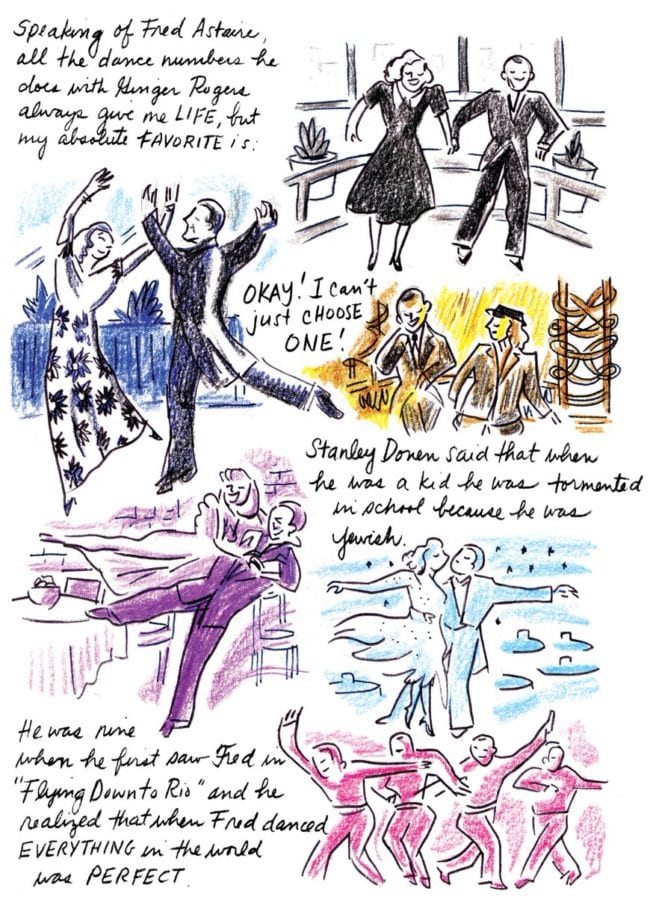What a warm and wonderful book this is, bursting with color and life, wise about the ways of the world and its ugliness, but steadfastly refusing to succumb to despair. I did not realize how much I needed to read a comic like this until I had it in my hands.
Ostensibly a memoir, the first half of the book (and, I suspect, most recent material) recounts Ayuyang’s youth, growing up as a Filipina-American in 1970s-era Pittsburgh. The youngest of four, she chronicles with a keen eye for detail (who here actually remembers the decorations hanging in their seventh grade classroom?) a mostly happy childhood filled with music, noise and love.
But it’s not as through bad times don’t exist, and Ayuyang does not shy away from depicting the struggles of being a first-generation American, trapped between your family’s culture and the one that surrounds you, not to mention having to deal with bullies, racism, bad teachers, and having to give a big presentation to the seventh grade class. Yet young Rina brushes them off like the proverbial dirt off her shoulder, perpetually enthralled by pop music, TV sitcoms and old movie musicals.
From there it’s an abrupt jump by several decades to Ayuyang’s life in California as a mom and cartoonist. Here, she chronicles her obsession with “Dancing With the Stars” and Steelers football, as well as the general difficulties found in trying to balance family and work. Again, while she doesn’t shy away from the stress and frustration of modern life (perhaps the most moving and fraught part of the book is when she delves into her bout with postpartum depression after the birth of her son), it doesn’t become all-consuming either, but merely a hook for her to hang a knowing joke on.
 You might have noticed that music plays an important role in this book. Ayuyang regards music, rhythm and dance, even on cheesy shows like Dance Fever and Solid Gold not just as an essential method of self-expression but as a way to transcend the grind of the normal world. To that extent, she eschews a traditional grid format on her pages, instead allowing the panels -- vibrant with rich blue, purple and yellow hues -- to seep one into the other.
You might have noticed that music plays an important role in this book. Ayuyang regards music, rhythm and dance, even on cheesy shows like Dance Fever and Solid Gold not just as an essential method of self-expression but as a way to transcend the grind of the normal world. To that extent, she eschews a traditional grid format on her pages, instead allowing the panels -- vibrant with rich blue, purple and yellow hues -- to seep one into the other.
Her art really shines during one of the book’s myriad dance sequences. In these moments, Ayuyang breaks down the figures to abstracted or near-abstract shapes, overlapping each other in a slow Eadweard Muybridge-ish approximation of motion. One the page, if not in real life, dance is nothing less than freedom.
We are not living in the best of times. Given the daily headlines, it’s easy to have ugly feelings about this country and the culture that envelops it. Yet without delving into flag waving or jingoism, Ayuyang paints a warm, loving portrait of American life, nailing the way the small, silly stuff that hipsters (like me) like to mock -- reality television, sporting events -- and showing the simple happiness seeming it can bring to our lives. Life is hectic. Troubles are many. But joy, Ayuyang says, is always present. Just listen to the music.







